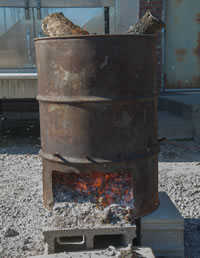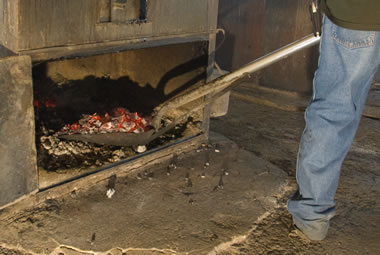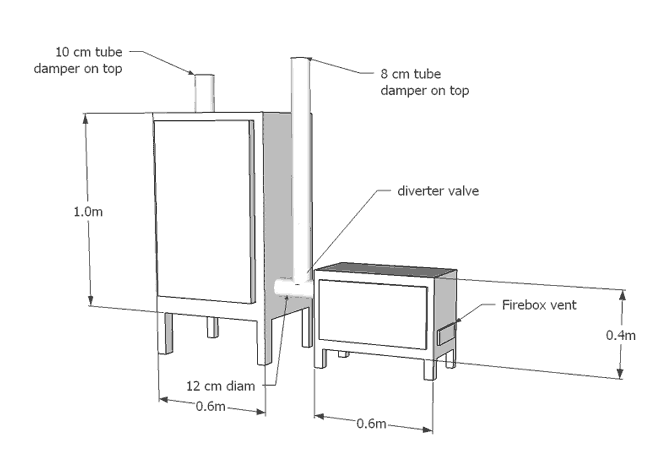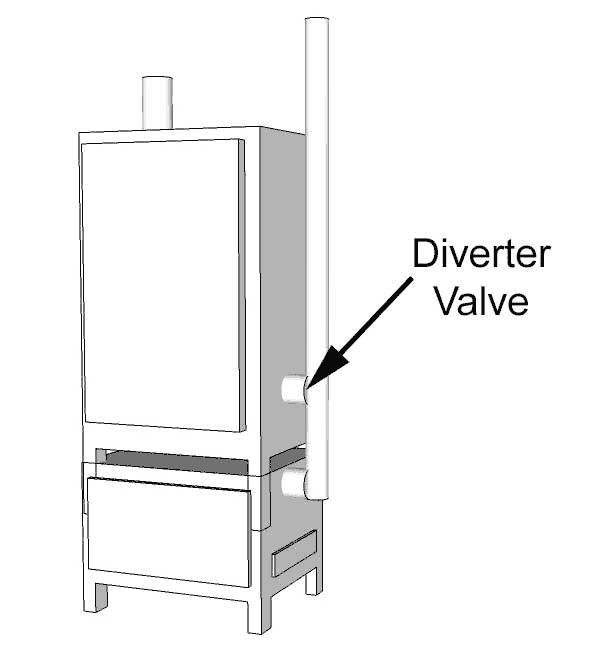| g e n u i n e i d e a s | ||||||
 |
 |
 |
 |
 |
 |
 |
| home | art and science |
writings | biography | food | inventions | search |
| pipe dreams |
|
May 2014 I have mixed feelings when it comes to tools. When I purchase a saw or a chisel, I always choose the best quality I can afford. With a great tool in the hands of a reasonably competent woodworker, the miters are accurate and the joints tight. A cheap tool is always fighting your intentions, and the results are inevitably fussy. Yet, with enough skill or training, a talented carpenter could probably build a six drawer cabinet with nothing more than a pen knife and a bottle of Elmer's glue. So it is with cooking- some of the best food in world is cooked in humble kitchens on sketchy stoves over improvised fires. So why I have I dreamt for years to build my own custom smoker, when you can produce great barbecue on every thing from a humble Weber to an open campfire? It's the kitchen scientist in me. The vast majority of smokers embody a fatal flaw- they intertwine temperature control with smoke flavor. Almost all smokers employ dampers to adjust air flow and thus combustion conditions and eventually cooking temperature. But, when you starve wood from oxygen, it tips the combustion reactions towards the bitter end of the chemical spectrum. Creosotes rather than phenols. Caustic rather than sweet. If you increase oxygen levels artificially, say with a fan, the wood burns so cleanly (complete "pyrolysis") that all the delicious flavor molecules are destroyed in the conflagration. The science of wood-burning is complex, involving a mix of hundreds of chemical in a dance with air, humidity, lignin and temperature. Commercial smokehouses aim for around 650F- where the smoke is sweet, wood burns coal red, and carcinogens are minimized1. Open-pit smokers know this rule intuitively. They turn logs into red hot coals in a "burn box", and shovel the coals into a large chamber under the meat. The coals are always red, and the pitmaster controls temperature by varying the position and number of embers.
But pure wood-coal fires are a rarity. Instead, we typically ignite fuel in the cooker, and adjust airflow. A single chimney and a single air path. This is why pellet smokers and big offset smokers produce "light" smoke. There is so much oxygen flow, the fire burns intensely and the flavor molecules are consumed. On the other end of the spectrum, many cabinet smokers are so tightly constructed that the small tray of fuel is starved for oxygen to maintain a low temperature. When you throw a few hunks of hardwood flavor onto the coals, they burn inefficiently and leave behind a creosoty taste. Its a matter of chemistry, not over-smoking.... So I've always wanted to build a smoker where temperature and smoke are independent variables. Basically, it consists of two "faces"- one is a fireplace where wood is always burning at the optimal temperature, and the second is a smoking chamber, where you can divert some of this heat and sweet smoke for cooking. Two faces- the Janus Smoker. It would look something like this:
There are dampers on each chimney, and a diverter valve to connect the fireplace and the smoke chamber together. I'm planning on a stick burner, but there is no reason it can't be fueled with charcoal briquettes and wood hunks, or even gas and wood. Generally, the dampers are open and the firebox vent controls combustion, so when the diverter is turned, smoke and heat flows freely from the fireplace into the smoke chamber. When you refuel the fire, you can close the diverter to block ashes and soot from landing on your meat. I also favor a cabinet design for compactness and efficiency- perhaps like this:
Insulated walls would be a plus- I smoke deep into the winter. It's possible to automate the damper, and with a bit of electronic feedback, maintain the smoke chamber at a constant chamber. This is an improvement over a fan controller, which again may starve the fire to drop the temperature. But the more important issue is humidity. Humidity controls the color and depth of the smoke ring. Bark formation. And tenderness. In a typical smoker, a water pan is placed directly above the fire. How much humidity the pan produces is a bit of a crap shoot- depending on the heat of the fire, airflow though the smoker, fat floating on the water, how much moisture meat is contributing, etc. Lack of humidity control is one reason your cook varies from day to day2. So in the Janus smoker, I plan on immersing a small boiler in the midst of fireplace, and pipe the steam through a valve to the smoke chamber. Humidity on demand, which can be dialed back at the end of the run to firm up the bark, or be increased during the cook to tenderize without the need of the Texas Crutch. So as of May 2014, I'm drawing up plans. But, if you know of a commercial smoker of similar design, or a backyard improviser who's been down this road before, let me know. I want my tools to cut a tight miter.
|
|
-------------------------------------------------------------------------------------------------------- 1 It also produces nitric oxide and carbon monoxide, which leads to a deep red smoke ring. 2 An accurate moisture meter is nearly as important as a temperature gauge. More in the future on how to reliably measure humidity in a smoker.
|
 Contact Greg Blonder by email here - Modified Genuine Ideas, LLC. |



